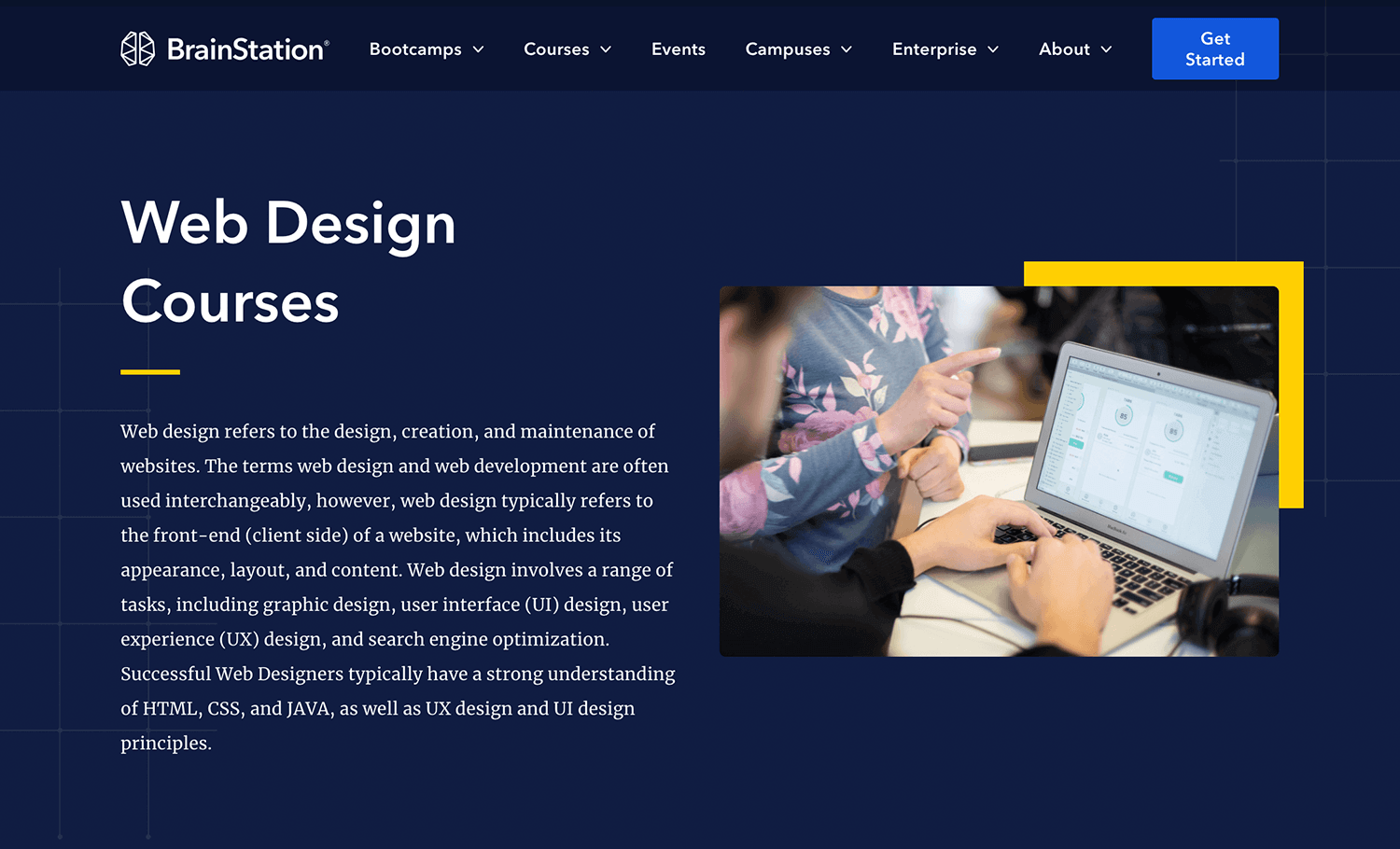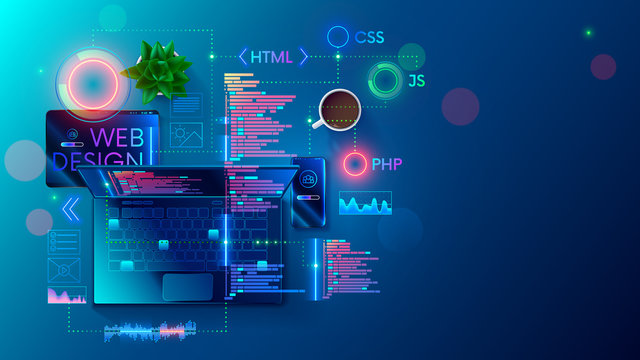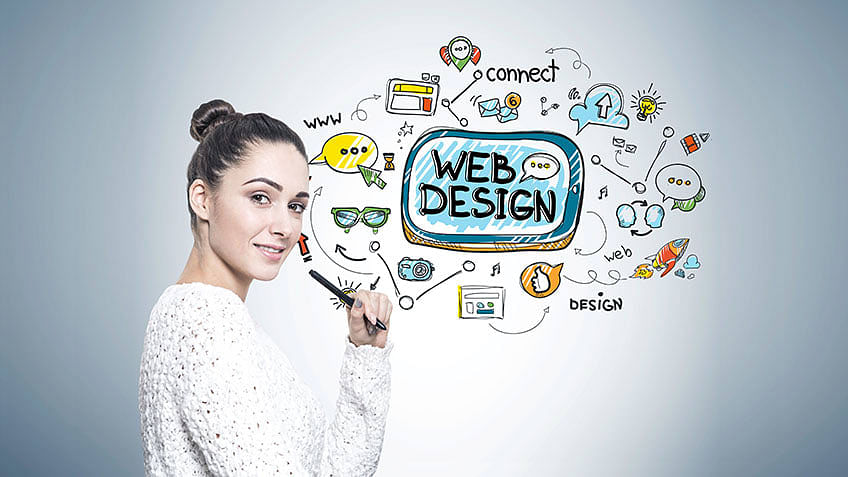Aligned Position Web Design: Tailor-Made Web Design Solutions for Maximum User Engagement
Aligned Position Web Design: Tailor-Made Web Design Solutions for Maximum User Engagement
Blog Article
The Very Best Kinds Of Web Layout to Enhance Individual Experience and Engagement
In the ever-evolving landscape of digital interaction, the efficiency of Web style substantially affects customer experience and involvement. Various design approaches, such as minimalist, receptive, and interactive formats, each deal one-of-a-kind benefits that can provide to varied individual requirements.
Minimalist Website Design
As digital landscapes end up being increasingly cluttered, minimalist website design has actually become a powerful approach to improving individual experience. This style approach prioritizes simplicity, concentrating on necessary elements while removing unneeded diversions. By using ample white area, straightforward navigating, and a minimal shade combination, minimalist style promotes quality and guides individual attention to essential content.
The core principle of minimal website design is to produce a seamless communication for individuals. By decreasing cognitive lots, customers can quickly grasp info without really feeling bewildered. This straight strategy not just enhances use however also urges interaction, as visitors are more probable to check out a site that is visually appealing and very easy to navigate.
In addition, minimal layout commonly highlights typography and imagery, using these elements tactically to convey messages successfully. This focus on necessary components can improve brand identity and create a memorable user experience. Essentially, minimal Web design is not just a fad; it is a thoughtful approach that identifies the significance of user-centered layout. By removing extraneous aspects, developers can create a much more interesting, efficient, and satisfying Web experience for all users.
Responsive Website Design
In today's varied digital atmosphere, receptive Web style has become crucial for creating a smooth individual experience throughout a plethora of devices. As users access sites on mobile phones, desktops, laptop computers, and tablet computers, the capability of an internet site to adjust its format and web content to various display sizes and resolutions is important.
Responsive website design uses adaptable grids, pictures, and CSS media queries to guarantee that Web material is provided efficiently, despite the tool made use of. This technique not just enhances the aesthetic allure of a web site however likewise substantially enhances usability. Customers are most likely to engage with a site that offers a regular experience, as it gets rid of the disappointment of having to focus or scroll exceedingly.
By embracing receptive design, organizations can improve their exposure and get to a wider target market. In summary, responsive Web design is an essential method that boosts user experience, interaction, and total satisfaction.
Interactive Web Design
Receptive Web design lays the groundwork for boosting customer experience, however interactive website design takes this an action even more by engaging individuals in an extra vibrant way - Aligned Position Web Design. By integrating aspects such as computer animations, clickable models, and real-time feedback, interactive Web design mesmerizes individuals, attracting them right into a richer surfing experience
This approach not only promotes involvement however likewise motivates individuals to discover material proactively instead of passively consuming it. Methods such as gamification, where individuals make benefits for completing jobs, can dramatically enhance the time spent on a site and improve overall complete satisfaction. In addition, interactive functions can streamline complicated info, making it a lot more enjoyable and absorbable.

Incorporating interactive style components can also cause higher conversion rates, as customers are much more most likely to involve with a site that actively entails them. Aligned Position Web Design. Eventually, interactive Web layout transforms user experiences right into remarkable trips, guaranteeing that site visitors return time and again
Flat Design
Characterized by its minimalistic approach, flat design highlights simplicity and performance, stripping away unnecessary aspects and concentrating on crucial functions. This design viewpoint prioritizes usability, guaranteeing that individuals can browse interfaces effortlessly and effectiveness. By utilizing a clean aesthetic, flat design eliminates the mess often located in more elaborate designs, consequently improving individual concentrate on content and functionality.
The characteristic of level style lies in its use of bold shades, basic typography, and geometric forms. These aspects add to an aesthetically attractive interface that is both contemporary and approachable. In addition, flat design fosters a feeling of clearness, permitting customers to determine important actions and details without diversion.
Additionally, level style is especially effective in receptive website design, as its simplicity translates well across various tools and screen dimensions. The absence of complex textures and gradients lessens filling times, which is vital for preserving user engagement. As electronic landscapes continue to advance, level style stays a pertinent choice for developing user-friendly web sites that improve overall experience. By use this link concentrating on crucial features, level layout not just meets individual needs however additionally encourages seamless interaction, making it an important component of effective website design strategies.
Flexible Web Layout
Adaptive Web layout tailors the user experience by creating numerous fixed formats customized to different display dimensions and gadgets. Unlike receptive layout, which fluidly adjusts a solitary design, adaptive layout employs unique formats for particular breakpoints, making certain ideal presentation on different systems. This technique enables designers to concentrate on the unique features of each device, boosting use by providing precisely what users require based on their context.
One of the main benefits of flexible Web style is its ability to optimize load times and efficiency. By serving tailored web content and photos that fit the individual's device, sites can decrease data usage and boost loading speeds. This is particularly helpful for users with slower links or minimal information plans.

In addition, flexible style facilitates a more controlled and constant branding experience. Since designers produce several formats, they can guarantee that the aesthetic aspects line up with the brand name's identification throughout different systems - Aligned Position Web Design. This results in a natural user experience, boosting interaction and advertising user retention
Verdict
Minimalist style fosters clarity and emphasis, while responsive style makes certain adaptability throughout various gadgets, advertising ease of access. Collectively, these style approaches contribute to the creation of straightforward environments that not just boost satisfaction yet additionally drive greater conversion rates, emphasizing their important importance in modern Web design approaches.

Minimal style fosters quality and focus, while receptive layout ensures versatility throughout numerous devices, advertising availability. Jointly, these style comes close to add to the production of user-friendly settings that not just improve satisfaction yet also drive greater conversion prices, highlighting great post to read their crucial value in contemporary Web design methods.
Report this page